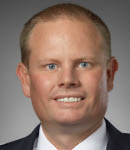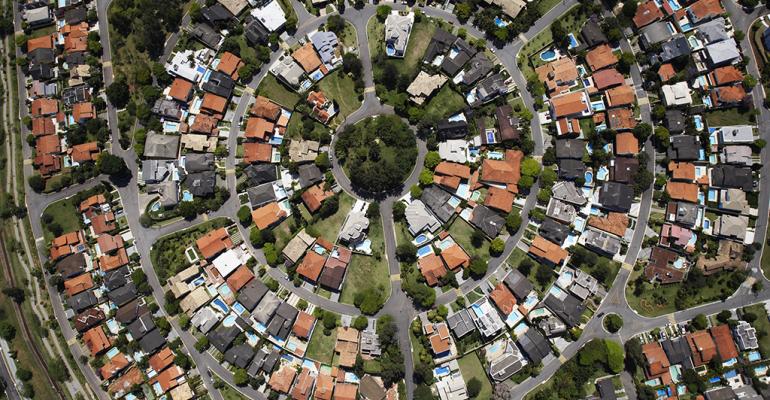The single-family rental (SFR) sector continues to mature as an asset class. And despite a proliferation of investors chasing the assets, fundamentals both for the sector itself and for the broader single-family housing market point to continued stability.
Single-family housing starts remain below historical averages. So there is little danger of too much supply coming on to the market. Moreover, the barriers to home ownership in the current economic climate point favor rentals as a long-term dynamic.
So how are investors viewing the asset class?
NREI recently caught up with Steve Hovland, director of research at HomeUnion, an Irvine, Calif.-based firm that specializes in online real estate investment management for SFR properties. Hovland discussed fundamentals in the space and the opportunities ahead for investors.
NREI: How would you describe market fundamentals seen in the SFR sector over the past 12 months?
 Steve Hovland: We are seeing the market return to a normalized pace. Rents are up 3.6 percent over the past year. Vacancy is around 7 percent. There is tons of investor interest out there.
Steve Hovland: We are seeing the market return to a normalized pace. Rents are up 3.6 percent over the past year. Vacancy is around 7 percent. There is tons of investor interest out there.
Traditional investors are looking at investing as an alternative to stocks and bonds, especially with [Federal Reserve Board] Chairwoman [Janet] Yellen saying interest rates are not going to get as high this cycle as they have in previous cycles. Investors are looking for yields somewhere, and are now more comfortable with this remote investing. Now we are seeing investors that are not just first adopters.
As for renters, it varies from market to market; on the coast you can almost turn a house in a day. In other areas, homes are still very sought-after in the right neighborhood. A neighborhood with good schools is typically attractive, as is being near major office districts or having access to transportation thoroughfares.
NREI: According to your most recent report, the national vacancy rate of 7.0 percent “is akin to full occupancy when turnover is factored into the figure.” Can you unpack that a little? Why is that level a sweet spot?
Steve Hovland: When I started looking at SFR vacancy, I compared it to apartments. That’s my background. In the apartment sector, 5 percent vacancy is considered full occupancy. Our data scientists found that at 7 percent vacancy, SFRs behave just like apartments do at 5 percent vacancy. It validates what we believed to be some characteristics of the market.
NREI: Is there any worry of too much single-family housing stock being devoted to the rental market?
Steve Hovland: There are some concerns in the housing market. I don’t think that the percentage dedicated to SFRs is a major supply concern. There are about 16.5 million homes, or 20 percent of the market. Plus we are in a climate where the percentage of first-time homebuyers remains below historic levels, and there are affordability issues with properties in coastal cities, which are much more significant housing issues.
NREI: What has been the total amount of investment year-to-date? How do you believe volume will trend this year compared to last? What is your outlook for investment in the single-family rental market as we enter the second half of 2017? Which factors are driving investment and which factors are creating headwinds for the sector?
Steve Hovland: In the first quarter, SFR investors closed approximately 225,000 investment sales transactions, for approximately $35 billion. That is trending a bit lower than last year at this point. Last year, 1.1 million rental homes hands changed hands and we think we will reach last year’s volume. Transaction velocity changes seasonally here, there are ebbs and flows, so we expect some pickup.
Factors driving investment are low interest rates and low bond rates, and the uncertainty of the level of strength in the equity markets. We’re going to be eight years into the recovery this summer. Investors who have a lot of money in the stock market don’t want to be the ones holding the bag when the party’s over.
The biggest challenge for investors is a lack of knowledge in companies that allow them to invest remotely, because there are many nonreputable operating companies in the SFR space, and as a result some investors are staying away from the sector.
NREI: Which categories of SFR investors are most active? Are we seeing any changes in investment activity by groups—such as with foreign investors, private investors, institutional investors, mom & pops?
Steve Hovland: Individual investors are the most dominant, but their strategy is changing. Earlier, they invested in single-family rental assets for yield. Now they are looking at this class as a wealth preservation play.
We are seeing SFR investors pursuing high-growth areas like Austin (Texas) and see the asset type as a way to create equity. The properties take care of themselves financially and maintenance-wise via the rent paid by tenants.
NREI: There has been a proliferation of people and companies pitching “fix and flip” strategies to unseasoned investors. Is there a risk of too much of that activity disrupting the single-family market? Do you sense any risk of there being too many unsophisticated investors entering the market?
Steve Hovland: I don’t think there’s too many of these unsophisticated investors, because they don’t end up staying too long. If it was such a good business, then the secrets behind their operations wouldn’t be given away. It is a lot more difficult to recoup your investment or make money when you don’t know what you’re doing.
NREI: What are some the biggest challenges and opportunities managers of SFRs are facing in the current climate?
Steve Hovland: Inventory is the biggest challenge because home prices are making deals harder to pencil out. At HomeUnion we have automated valuation models, with $5 billion in assets analyzed. For smaller investors, property valuation becomes more difficult. The second-biggest challenge is rehab. There are not enough construction workers in the labor force right now. General contractors often don’t treat smaller operators or investors with the same level of priority as they treat larger operators, which can give them high volumes of business.
NREI: Policies and plans being presented by the Trump administration over the course of the year are drawing major media attention along “What-if” lines. In your opinion, which proposals would most affect the market for SFR investors and why?
Steve Hovland: One big concern is the fate of 1031 exchange. A few years ago it was on the chopping block. If the 1031 exchange ends up being eliminated, it will reduce liquidity in the markets. This section of the IRS code is used by newer investors to move up the quality scale for future investment. It is hard to see right now how bad the impact will be on the real estate investment sector, but there will be some effect.
The doubling of the standard deduction will take a lot of people away from using the mortgage interest deduction. The mortgage interest deduction has been very appealing, especially to homebuyers in high-priced markets. We could see a shift in home values—a decrease in pricing—in high-priced markets like California. Or it could further reduce the home buying rate. That would be good for rental property investors.

